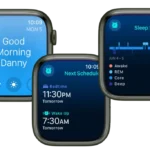DLSS 4 is set to bring exciting changes to gaming graphics. NVIDIA’s Deep Learning Super Sampling (DLSS) tech has been a game-changer for PC gaming. It lets players enjoy better visuals without losing speed. DLSS 4 may add new features like smoother objects and better-looking textures.
NVIDIA CEO Jensen Huang has hinted at some of these upgrades. He talked about DLSS 4 or 5 being able to improve low-quality objects in games. This could mean sharper, more detailed graphics even for older games or less powerful PCs.
The jump from DLSS 3 to 4 might not happen right away. NVIDIA often tests new versions in a few games first. But when it does come out, DLSS 4 could make a big splash in the gaming world. As we eagerly await official announcements from NVIDIA, keep in mind that the final features and capabilities of DLSS 4 might differ from the current rumors. Stay tuned for further updates and prepare to be amazed by the next evolution of DLSS.
DLSS 4: Rumor Mill
While NVIDIA remains tight-lipped about the specifics of DLSS 4, the rumor mill is churning with exciting possibilities for the next generation of this AI-powered upscaling technology.
Performance Boost
- Significant Frame Rate Increase: Many whispers hint at a substantial frame rate boost with DLSS 4, potentially exceeding even the impressive gains seen with DLSS 3. Some estimations suggest up to a 60% increase in performance for the flagship RTX 5090.
- Enhanced Image Quality: DLSS 4 is rumored to not only boost frame rates but also improve image quality further. This could involve advancements in AI models and algorithms to reduce artifacts and deliver even more realistic visuals.

New Features and Capabilities
- Support for More Games and GPUs: DLSS 4 is expected to be compatible with a broader range of games and graphics cards, possibly even extending to some older RTX models.
- Improved Ray Tracing Performance: With ray tracing becoming more prevalent in modern games, DLSS 4 might introduce optimizations specifically tailored to boost ray tracing performance.
Potential Release Timeline
- Tied to RTX 50-series Launch: The most persistent rumor is that DLSS 4 will debut alongside NVIDIA’s next-generation RTX 50-series GPUs, which are speculated to launch in late 2024 or early 2025.
Caution: Rumor Territory
It’s important to emphasize that these are just rumors at this stage. NVIDIA has not officially confirmed any details about DLSS 4. However, the whispers and leaks suggest that DLSS 4 could be a significant leap forward in upscaling technology, offering gamers a substantial performance boost and enhanced image quality.

Key Takeaways
- DLSS 4 aims to boost game visuals and performance
- New features may include better object and texture quality
- The update could improve graphics for both new and older games
DLSS Technology Evolution
DLSS has grown rapidly since its introduction. Nvidia’s AI-powered tech keeps improving image quality and performance for RTX GPUs.
Deep Learning Super Sampling (DLSS) Overview
DLSS uses AI to boost game performance on RTX graphics cards. It renders games at a lower resolution, then upscales the image to look sharp at higher resolutions. This process saves GPU power while maintaining visual quality.
DLSS works with special Tensor cores in RTX GPUs. These cores run AI algorithms to enhance the upscaled image. The result is smoother gameplay with better frame rates, especially at high resolutions or with ray tracing enabled.
Progress From DLSS 2 to DLSS 3
DLSS 2 brought big improvements over the first version. It offered better image quality and worked in more games. DLSS 2 also added more quality options for players to choose from.
DLSS 3 took things further by adding frame generation. This tech creates new frames between rendered ones, boosting frame rates even more. It also improved image quality again, reducing artifacts and flickering.
DLSS 3 requires newer RTX 40 series GPUs to fully work. This gives gamers a reason to upgrade their graphics cards for better performance.
Anticipated Features of DLSS 4
DLSS 4 is set to bring major upgrades to graphics and performance. Nvidia’s new tech aims to boost frame rates, improve image quality, and enhance lighting effects.
Enhanced Frame Generation
DLSS 4 will likely build on DLSS 3’s frame generation. It may create more frames between rendered ones, leading to smoother gameplay. This could help games run at higher frame rates, even on less powerful GPUs.
The new version might reduce artifacts and ghosting issues seen in DLSS 3. It could also work better with fast-moving objects and scenes.
DLSS 4 may support more game types and graphics engines. This would let more developers use the tech in their games.
Improved Image Quality and Texture Handling
DLSS 4 could make games look sharper and more detailed. It may use AI to create better textures on the fly.
The tech might handle complex scenes better, with less blur or fuzziness. This could be especially helpful for 4K gaming.
DLSS 4 may also improve how it deals with fine details like hair, grass, and small objects. These often look worse with current upscaling methods.
Ray Reconstruction and Lighting Advances
Ray tracing might get a big boost with DLSS 4. The tech could use AI to fill in more lighting details between rendered frames.
This could lead to more realistic shadows, reflections, and global illumination. Games might look more lifelike without hurting performance as much.
DLSS 4 may also help with ray-traced effects in fast-moving scenes. This has been a challenge for current ray tracing tech.

Developer Integration and Support
Nvidia will likely make DLSS 4 easier for game makers to use. It might offer better tools and plugins for popular game engines like Unity and Unreal.
The tech could also become more flexible, letting developers fine-tune how it works in their games. This might lead to better results across different game styles.
DLSS 4 may come with new features in Nvidia’s Game Ready drivers. These could help the tech work better with specific games right at launch.
Impact on Gaming and Graphics
DLSS 4 is set to bring major changes to PC gaming. It will boost performance, improve visuals, and create new opportunities for game developers.
Performance Enhancements for Gamers
DLSS 4 aims to deliver big gains in frame rates. It will likely work even better than DLSS 3 at upscaling lower resolution images to look sharp on high-res displays. This means smoother gameplay on 4K monitors without needing the most expensive graphics cards.
Nvidia may add new features to DLSS 4 that further boost performance. One possibility is improved ray tracing, which could make realistic lighting more practical in games. DLSS 4 might also reduce input lag, making games feel more responsive.
For games like Cyberpunk 2077 that push graphics to the limit, DLSS 4 could be a game-changer. It may let more players enjoy advanced visual effects without sacrificing smooth performance.
Effects on PC Gaming Ecosystem
DLSS 4 could shake up the PC gaming market. It may give Nvidia’s RTX 40-series and future 50-series GPUs a big edge over competitors. This might push other companies to develop similar AI upscaling tech.
Game developers may start to rely more on DLSS-like features. This could change how they optimize games. Instead of focusing only on native resolution performance, they might design games with AI upscaling in mind from the start.
DLSS 4 may also impact monitor choices. If it works well enough, some gamers might pick higher refresh rate 1440p displays over 4K, knowing DLSS can provide a near-4K experience.
Implications for Content Creators and Game Developers
DLSS 4 could open new doors for game graphics. Nvidia has hinted at using AI to generate game textures and objects. This might let developers create more detailed worlds without huge file sizes.
Content creators may benefit from faster rendering times when working with high-res assets. DLSS 4 could speed up video editing and 3D modeling tasks that use GPU acceleration.
For game developers, DLSS 4 might simplify optimization. They could focus on making games look great at lower base resolutions, relying on DLSS to handle higher resolutions. This could speed up development and testing.
FAQs
Is there DLSS 4?
DLSS 4 has not been officially released by NVIDIA. It is rumored to be in development and potentially tied to the launch of the next-generation RTX 50-series GPUs.
Is DLSS 3 only for RTX 4000?
Yes, currently DLSS 3 with its Frame Generation feature is exclusive to the RTX 4000 series GPUs. However, previous versions of DLSS, such as DLSS 2, are compatible with a wider range of RTX cards, including the 2000 and 3000 series.
What cards are supported by Nvidia DLSS 4?
Since DLSS 4 has not been officially released, its supported cards are not yet confirmed. However, rumors suggest it might be compatible with a broader range of GPUs than DLSS 3, potentially including some older RTX models.
Do all RTX cards support DLSS?
Yes, all RTX cards support some form of DLSS. The specific version and features available may vary depending on the GPU model. Older RTX cards may not have access to the latest DLSS 3 features, but they can still benefit from DLSS 2’s upscaling capabilities.







